A destination for generations of tourists and expats alike, vibrant colonial city of San Miguel de Allende in the highlands north of Mexico City boasts cool, temperate weather, a robust arts and culture scene, exciting live music, outstanding restaurants and bars, comical giant puppets, and multiple festivals. Visit its cobbled streets, historic architecture, and lovely rooftop bars and restaurants with TABLE contributor Mara Harris.
San Miguel de Allende: A City Steeped in History
San Miguel de Allende was founded in 1542, first as a mission and military outpost, and later as a textile-manufacturing center and part of a silver-mining empire. Prosperous merchants built the stunning 17th- and 18th-century buildings that characterize the city. An economic downturn in the late 19th and early 20th centuries preserved this Baroque architecture until prosperity returned after World War II. At that point, artists, tourists, and US veterans—taking advantage of the GI Bill—arrived to study at the prestigious Instituto Allende and establish an art colony.
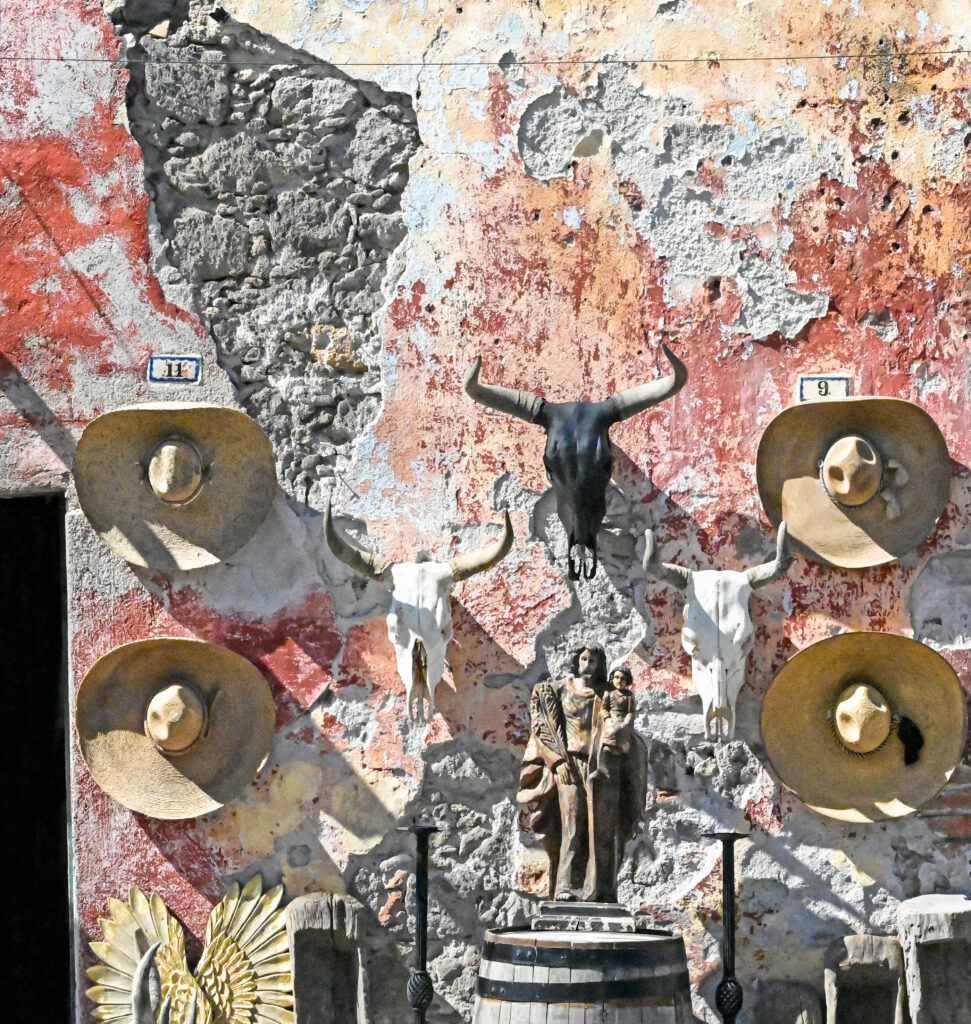
UNESCO World Heritage Splendor
Now a UNESCO World Heritage Site, San Miguel’s historic centro boasts well-preserved Baroque buildings painted in reds, oranges, ochres, and browns. At its heart stands the Parroquia de San Miguel Arcángel, a parish church with towering pink spires that overlook the Jardín, the city’s lively tree-ringed central plaza. Like most Mexican plazas, the Jardín is a hub for mariachis, parades, fireworks, weddings, and people-watching.
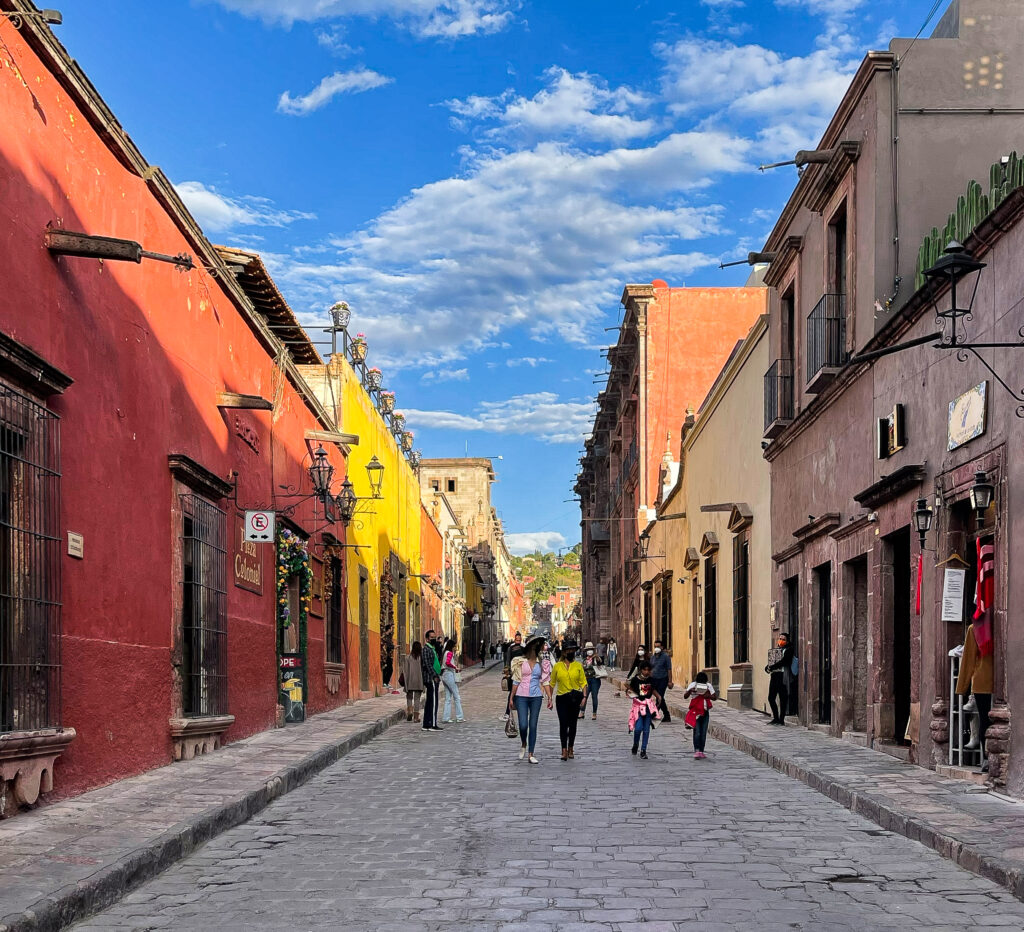
Festivals, Parades, and Mojigangas
Almost every weekend brings a festival, celebration, or parade. Distinctive giant puppets, or mojigangas, tower 10 to 18 feet tall and depict characters ranging from Frida Kahlo to cartoon figures. Imported from Spain as los gigantes, the mojiganga tradition survives today only in San Miguel and parts of Oaxaca. They infuse humor and whimsy into weddings and public events.
Festivals vary from small religious processions to massive parades that feel as crowded with participants as with spectators. Bands, puppets, costumed characters, and Indigenous dancers create unforgettable spectacles, always punctuated by fireworks. Highlights include Semana Santa (Holy Week), Independence Day (September 16), the Feast of San Miguel (late September), and Día de los Muertos (early November).
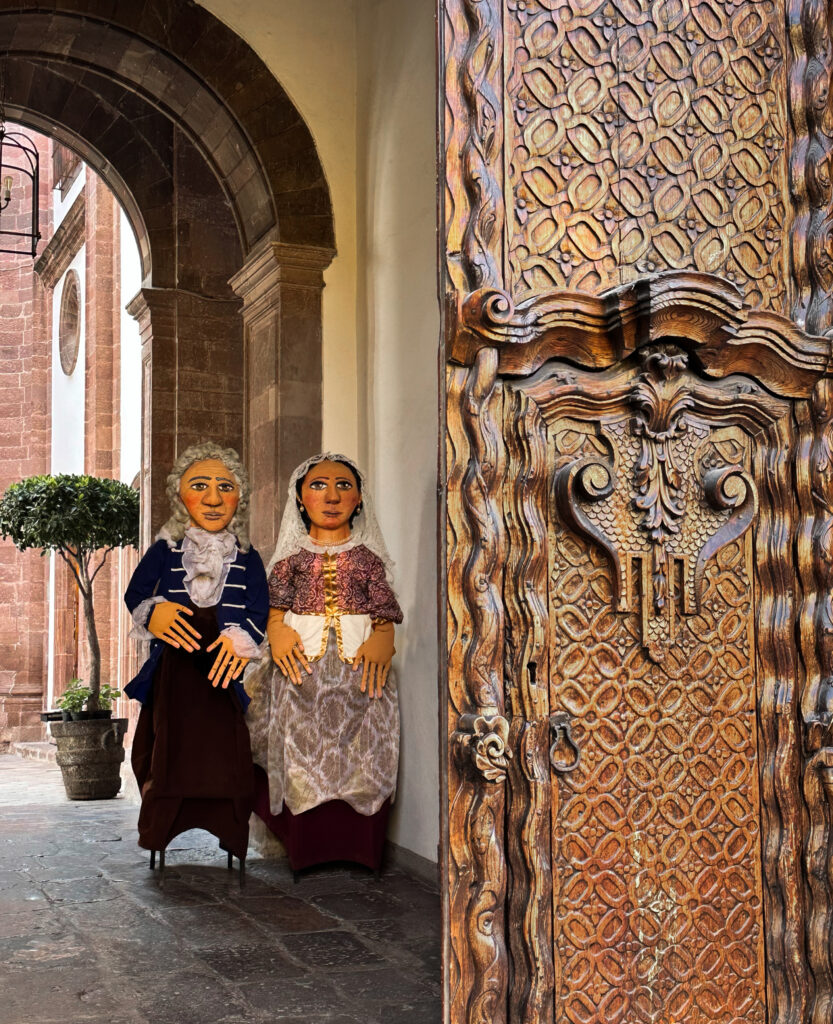
Wandering the Streets
Bring sturdy walking shoes to navigate cobbled streets where buildings meet the road, leaving only narrow sidewalks. Heavy doors and ornate windows hint at hidden courtyards, rooftop gardens, and private patios. Many former homes now house shops and restaurants that reveal traditional courtyards framed by residential rooms.
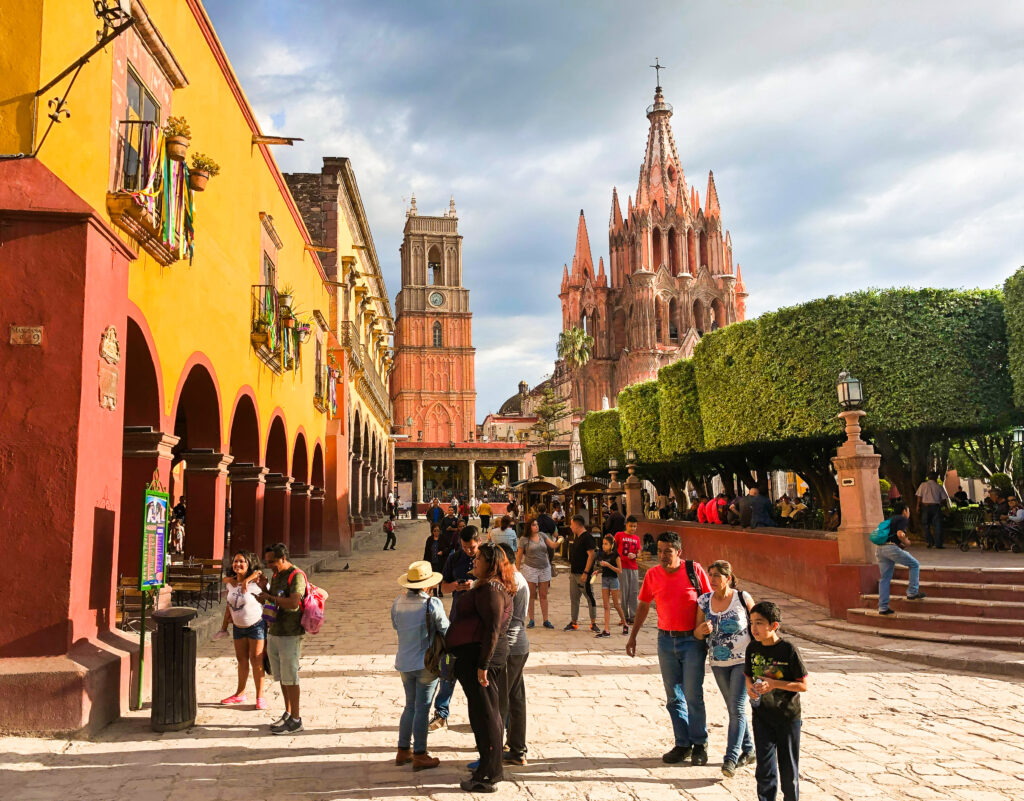
Shopping and Art in San Miguel
Shopping in San Miguel blends Indigenous crafts with modern design. The Mercado de Artesanías stretches a dozen blocks, bursting with handmade works from across Mexico. Next door, a food market sells nopales, queso fresco, limes, and more. For a more curated experience, Fabrica Aurora—a former textile plant—hosts upscale galleries, shops, and restaurants. Around every corner, the city offers a fresh mix of food, art, culture, and people.
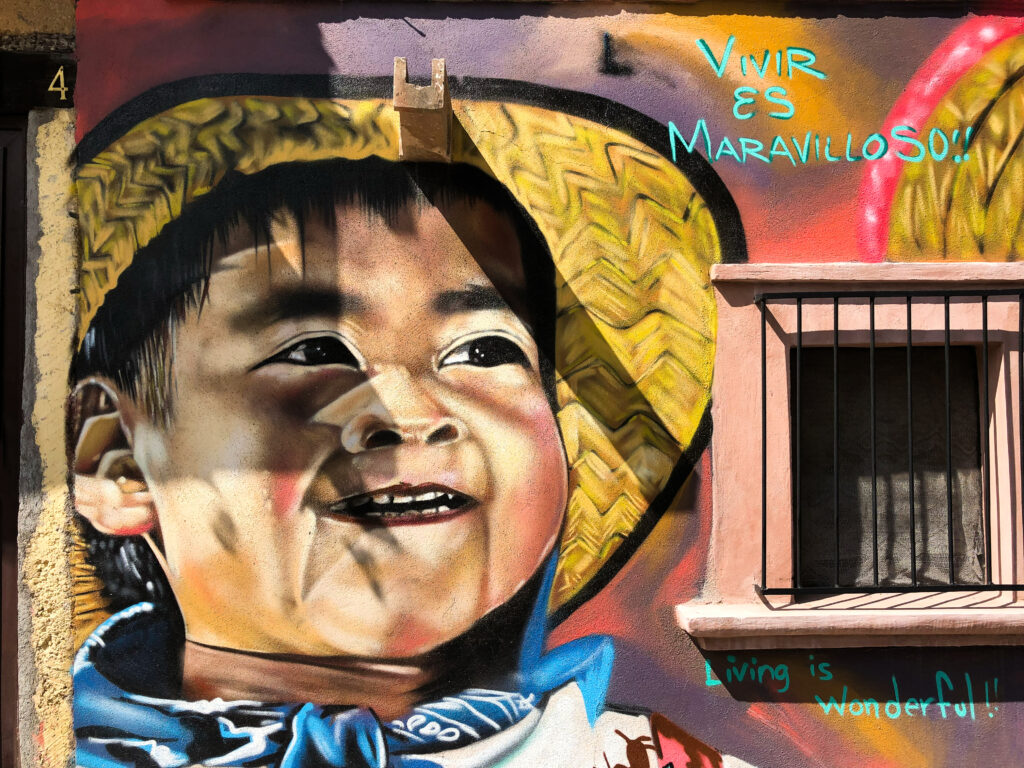
Rooftop Restaurants and Bars in San Miguel
Exploring San Miguel is thirsty, hungry work. Fortunately, its many rooftop bars and restaurants provide both respite and stunning views. Because much of the city rises along a mountain slope, even two- and three-story rooftops deliver sweeping vistas. Sunsets here are breathtaking.
La Posadita
Calle Cuna de Allende 13
Across the street from Quince, trendy La Posadita serves up contemporary Mexican food and specialty cocktails along with views of the Parroquia a block away. The posole and enchiladas are highly recommended.
Casa No Name
Calle del Doctor Ignacio Hernandez Macias 52
Formerly the home of famed photographer Deborah Turbeville, this 18th-century villa is now a small boutique hotel serving breakfast or brunch in its intimate, fresco-lined courtyard. The Olivia Bar, one of the centro’s few rooftop bars without a view, is still worth a visit for its opulent décor and luxury ambiance.
Antonia Bistro, El Palomar Hotel
San Francisco 57
High above the centro’s eastern edge, Antonia Bistro boasts some of the loftiest vistas in the city. Its glass-fronted balcony ensures that nothing obstructs panoramic views of spectacular sunsets, as well as of the Parroquia and other landmarks. A contemporary, casual, elegant vibe for lunch or dinner.
La Azotea
Umarán 6
This popular hidden gem is conveniently located near the Jardín. There is no sign; you get to it through the ground-floor restaurant Pueblo Viejo. Enjoy sharable small plates, excellent drinks, good views, and a lively atmosphere. The jicama tacos are not to be missed.
Luna Bar, Rosewood Hotel
Nemesio Diez 11
This is one of the most elevated experiences in San Miguel, both literally and figuratively. Luxury appointments and spectacular views accompany tapas and specialty drinks. Be sure to walk around the gardens.
Bekeb, Casa Hoyos Hotel
Calle Mesones 14
Bekeb refers to the indigenous Tzotzil term bek, which means “seed,” and the name evokes aromas and flavors of authentic Mexican ingredients crafted into inventive contemporary cocktails by celebrated owner and mixologist Fabiola Padilla.
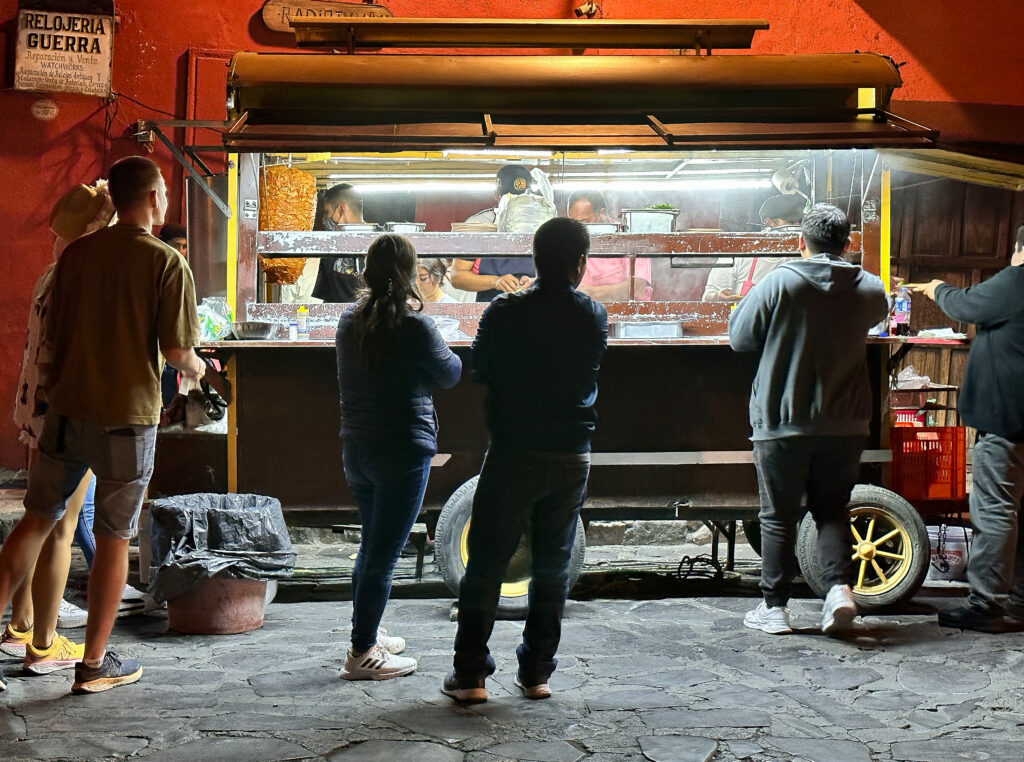
Story by Mara Christian Harris
Photography by Candy Brenton
